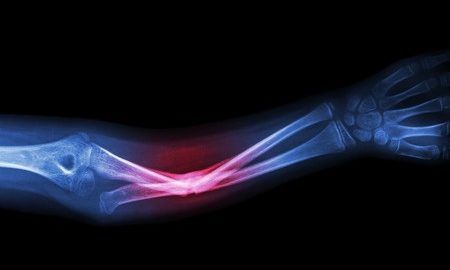Cedars-Sinai Team Repairs Severe Fractures with Stem Cells

A team of researchers at Cedars-Sinai has successfully repaired severe fractures with an innovative method that relies on stem cells. The experiments were conducted in laboratory animals, but if proven effective and safe in humans, could change the way broken bones are treated.
Cedars-Sinai Team Repairs Severe Fractures with Stem Cells
The method involves using the ability of stem cells to regrow the body’s own tissues. The treatment could potentially replace bone grafting as a way of mending severe fractures. This could prove revolutionary in orthopedics, says Dan Gazit, Ph.D., DMD, of the Department of Surgery’s Skeletal Regeneration and Stem Cell Therapy Program at Cedars-Sinai. The technique combines engineering and biological approaches to regenerative medicine. The findings were reported in the journal Science Translational Medicine.
Fracture Treatment with Bone Grafts
Worldwide, approximately 2 million bone graft procedures are performed every year to treat severely injured bones from accidents and injuries. Severe fractures are associated with a gap between the fragments of bone that is too large to be bridged by bone regrowth. An autologous or donor graft is implanted to help heal the fracture. Unfortunately, there are several disadvantages of this procedure, which is painful, expensive, and involves a lengthy hospitalization. In addition, the grafted bone, typically sourced from the pelvis, does not always grow and integrate with native bone, resulting in repair failure.
Fracture Treatment with Stem Cells
In their experiments, the Cedars-Sinai team developed a collagen matrix and implanted it at the site of fracture in the leg bones of laboratory animals. Collagen is a protein that is essential for bone building in the body. Over the next couple of weeks, the collagenous matrix encouraged the animal’s own stem cells to initiate bone repair. Micro-bubbles of a bone-inducing gene were delivered to the stem cells and an ultrasound pulse was applied to facilitate its entry into the cells.
Two months following the procedure, all treated laboratory animals had healed their fractures. The bone that grew in the gap was found to be as strong as grafted bone, explains Gadi Pelled, Ph.D., DMD, co-author of the study. The findings demonstrate that ultrasound-mediated delivery of genes to stem cells is an effective method of healing severe bone fractures that will not heal on their own. If successful in humans, this innovative method would address a large unmet need in clinical orthopedics.
References:
- https://www.medicalnewstoday.com/releases/317533.php


